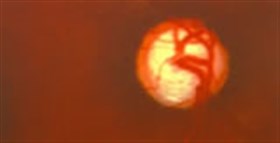
Introduction
Glaucoma, in its most prevalent form, is a slowly progressing eye condition that causes damage to the optic nerve (optic neuropathy) resulting in permanent vision loss. It has been called the “silent thief” because it can slowly steal your sight without you being aware of it. By the time you have become aware that your vision is no longer normal, it is usually too late.
Consequently, routine eye health examinations are of huge benefit. Glaucoma diagnosed early by your optometrist means that, while the condition cannot be cured, the condition can be arrested (with medical treatment) and your vision preserved.
The prevalence of glaucoma in New Zealand is about 2% of the population but that prevalence increases with age.
Understanding glaucoma
Light enters the eye through the pupil and casts an image on the retina at the back of the eye. This image is transferred to the brain via nerve fibres from the retina. These retinal nerve fibres band together as they exit the eye and become the optic nerve. The point where these fibres exit the eye is called the optic nerve head (or optic disc). The optic nerve head is the area where an optometrist can observe damage caused by glaucoma.
Glaucoma is the name given to a number of different conditions that can result in damage to the optic nerve head. That damage starts as a painless, peripheral loss of vision which is why it so often remains undetected by the person developing glaucoma. The principle cause of damage to the optic nerve disc is elevated eye pressure.
Types of glaucoma
Primary open angle glaucoma. This form of glaucoma is also called chronic open angle glaucoma. The eye produces (at a large muscle called the ciliary body) a fluid called aqueous. This fluid needs to drain out of the eye at the same rate as it is being produced. If this doesn’t happen, the pressure of the eye increases. For a particular eye there will be a critical pressure where the optic nerve head will become damaged resulting in vision loss.

Angle closure and angle closure glaucoma. This condition is quite rare in a white population (about 0.02%) but not so rare that an optometrist will be surprised to detect its risk factors. It is much more prevalent in the Eskimo and the Chinese. This is the acute form of glaucoma i.e. its onset is sudden. The patient will have a painful eye (and may be vomiting because of that pain); the eye is red, the pupil mid-dilated and not moving, and the vision “steamy”. Angle closure happens because of a sudden closure of the angle made by the iris and the cornea coming into contact with each other. This is the drainage angle of the eye and suddenly blocking it off means that eye pressure rockets. This constitutes a medical emergency with the patient hospitalized for a day or two. Failure to treat angle closure within a day can result in angle closure glaucoma.
Chronic angle closure and angle closure glaucoma. In acute angle closure the drainage angle of the eye closes suddenly with the entire angle closed. In chronic angle closure the angle gradually closes and mimics the same pressure rise as in Primary open angle glaucoma.
Secondary glaucoma’s. Primary glaucoma’s are primary because the cause of the glaucoma is not truly known. A secondary glaucoma is secondary because the cause of the elevated pressure can be found. These secondary causes can include:
- Pigmentary dispersion syndrome. Occurs when pigment, usually from the iris, clogs up the drainage angle and so increases eye pressure
- Pseudo exfoliation. Exfoliative material from the lens of the eye clogs up the drainage angle and so increases eye pressure
- Trauma to the eye resulting in damage to the drainage angle structures
- Medications with particular consideration to steroid use
Low tension glaucoma. This condition is not well understood. The optic nerve head disc shows signs of glaucoma damage but the eye pressure is within a normal range. A possible cause of this optic neuropathy may be compromised blood flow to the optic nerve disc.
Risk factors.
- Having a parent, brother or sister with glaucoma
- Being over 60 years old
- Being of a specific race: In Primary open angle glaucoma being a black American, in angle closure being Eskimo or Chinese
- Having certain medical conditions: diabetes, thyroid disease, Raynaud’s disease or a history of migraine.
- Taking steroids over a prolonged period
- A history of eye injury
- Injuries that have involved sudden blood loss
- Being near sighted (in angle closure) and far sighted in primary open angle glaucoma
What should I do to prevent getting glaucoma?
You can’t prevent getting glaucoma but you can have it diagnosed early by having regular routine eye examinations especially if you have any of the risk factors above (with particular reference to having a family history of glaucoma or being over 60 years old). Today’s treatments are very effective at preventing any further glaucoma damage and so preserving your vision.

